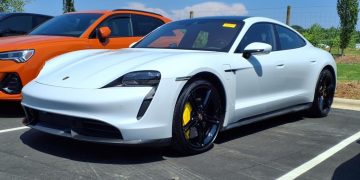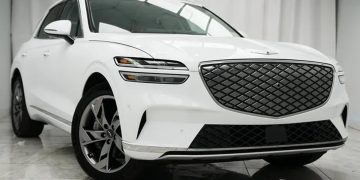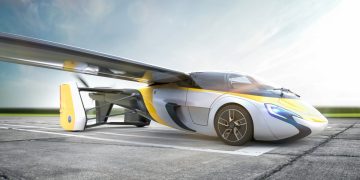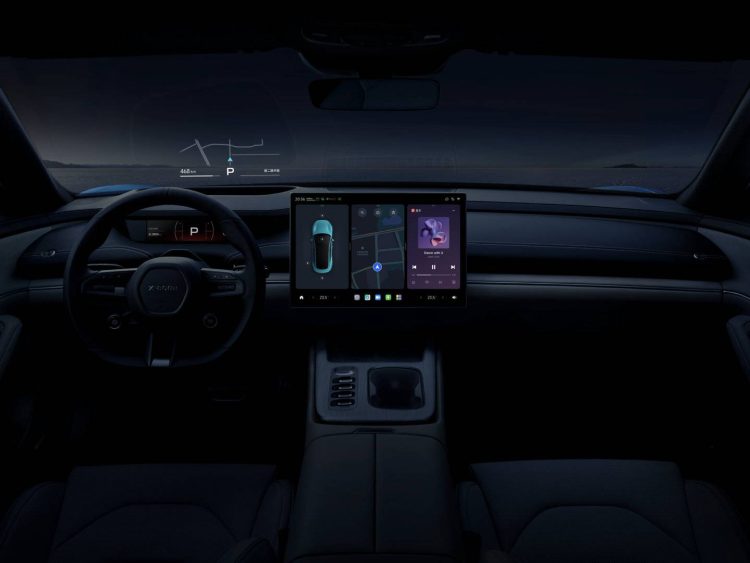In recent years, the integration of smart technologies into vehicles has transformed the driving experience, particularly in sedans. From enhancing safety to improving comfort and convenience, these innovations are reshaping the way we interact with our cars. The rise of smart technology in the automotive industry is not just about adding a few new gadgets to vehicles; it’s about creating a fully integrated experience that blends advanced engineering with cutting-edge software to make driving more enjoyable, efficient, and safe.
In this article, we will explore how smart technologies are transforming the sedan driving experience, from driver assistance features to in-car entertainment and beyond.
1. Advanced Driver Assistance Systems (ADAS): A New Era of Safety
One of the most significant changes in modern sedans is the incorporation of Advanced Driver Assistance Systems (ADAS). These systems use a combination of sensors, cameras, radar, and machine learning algorithms to assist drivers with various tasks, improving both safety and convenience.
Key Features of ADAS:
- Adaptive Cruise Control (ACC): ACC automatically adjusts the vehicle’s speed to maintain a safe distance from the car ahead. This system reduces the need for manual speed adjustments and helps maintain a steady pace, especially on long trips.
- Lane Keeping Assist (LKA): Lane keeping assist helps the driver stay centered in the lane by gently steering the car if it detects that the vehicle is drifting without signaling. This is particularly useful on highways and reduces the risk of accidents due to unintentional lane departure.
- Automatic Emergency Braking (AEB): AEB detects the likelihood of a collision and automatically applies the brakes if the driver does not act in time. This feature is crucial in preventing or mitigating accidents in sudden stop situations.
- Parking Assistance: Many modern sedans are equipped with parking sensors and automated parking systems that help drivers park in tight spots. Some systems even allow the car to park itself, making parking easier, especially in crowded urban areas.
Impact on Driving Experience:
ADAS systems drastically reduce driver fatigue by taking over some of the more tedious or stressful aspects of driving, such as speed control and lane keeping. These technologies improve overall driving safety, making it easier for drivers to focus on the road ahead while still maintaining control of the vehicle.
2. Infotainment Systems: Seamless Connectivity
Modern sedans are equipped with infotainment systems that connect seamlessly with smartphones, entertainment platforms, and navigation tools, significantly enhancing the driving experience. These systems not only keep you entertained on long trips but also offer greater convenience through intuitive interfaces.
Key Features of Infotainment Systems:
- Apple CarPlay and Android Auto: These platforms allow you to mirror your smartphone on the car’s display, providing access to apps like music, maps, calls, and messages. This integration makes it easier to use your phone safely while driving, reducing distractions.
- Voice Control: Many sedans now come with built-in voice recognition systems, allowing drivers to control navigation, music, and phone calls with simple voice commands. For example, saying “Hey Siri” or “Ok Google” can initiate functions like changing the radio station or sending a text message, all without taking your hands off the wheel.
- Touchscreen Displays: Modern sedans are equipped with high-resolution, user-friendly touchscreen interfaces that allow drivers and passengers to access a wide range of functions, from controlling the climate to adjusting the audio system.
- Real-Time Navigation and Traffic Updates: With features like Google Maps and Waze, drivers can receive real-time updates about road conditions, traffic jams, accidents, and even gas prices. This allows for more efficient route planning and can significantly reduce travel time.
Impact on Driving Experience:
These infotainment systems make the driving experience more enjoyable by keeping drivers connected to the outside world without distracting them from the road. Whether it’s streaming your favorite playlist, navigating through unknown routes, or making a hands-free call, these systems make the driving experience more seamless, modern, and less stressful.

3. Autonomous Driving: The Future of Sedan Driving
One of the most exciting developments in automotive technology is the progress being made toward autonomous driving. Though full self-driving cars are not yet common on the road, many sedans are already incorporating Level 2 and Level 3 autonomous driving features that can assist drivers in specific scenarios.
Key Features of Autonomous Driving Technology:
- Self-Parking: Many modern sedans can park themselves with minimal input from the driver. Using sensors and cameras, these vehicles can navigate tight parking spaces and park accurately without the driver having to steer or control the pedals.
- Traffic Jam Pilot: This feature allows the car to automatically steer, accelerate, and brake in stop-and-go traffic, which is particularly helpful in congested urban environments. The driver remains in control but can relax and let the car handle the mundane task of navigating through traffic.
- Autonomous Highway Driving: Some sedans are capable of driving autonomously on highways, including maintaining speed, lane position, and braking. While these systems still require the driver’s attention and intervention, they represent a significant leap toward fully autonomous vehicles.
Impact on Driving Experience:
The introduction of semi-autonomous features is revolutionizing the way we think about driving. While these technologies are still in their early stages, they promise to alleviate much of the stress of long-distance driving, particularly on highways. As these systems improve, the driving experience will become more hands-off, allowing drivers to focus on other tasks, such as resting, eating, or working while in transit.
4. Electric Powertrains: The Silent Revolution
As the world moves toward more sustainable transportation options, electric sedans are becoming increasingly popular. Electric vehicles (EVs) not only offer significant environmental benefits, but they also change the driving experience in profound ways.
Key Features of Electric Sedans:
- Instant Torque and Acceleration: Electric sedans provide instant torque from their electric motors, offering smooth and rapid acceleration. Unlike traditional gasoline engines, which need to rev up to deliver power, electric motors provide immediate response, making the driving experience more dynamic and enjoyable.
- Quiet Operation: One of the most noticeable differences when driving an electric sedan is the absence of engine noise. This results in a much quieter, more serene cabin, allowing for a more relaxing drive.
- Regenerative Braking: Electric sedans use regenerative braking systems that convert kinetic energy back into electricity when slowing down. This reduces brake wear and helps increase energy efficiency, contributing to a more sustainable driving experience.
Impact on Driving Experience:
Electric sedans offer a completely different driving feel compared to traditional gasoline vehicles. The instant torque provides a more responsive and smooth driving experience, while the quiet operation enhances comfort and reduces noise pollution. The regenerative braking feature also encourages a more relaxed driving style, as it allows for more efficient use of energy.
5. Over-the-Air Updates: Continuous Improvement
One of the most revolutionary aspects of smart technology in sedans is the ability for vehicles to receive over-the-air (OTA) software updates. Similar to how smartphones and computers are regularly updated, modern sedans can download and install updates to improve performance, add new features, and fix bugs.
Key Features of OTA Updates:
- System Improvements: Automakers like Tesla, BMW, and Mercedes-Benz now offer the ability to update key systems like the infotainment system, driver-assistance features, and vehicle controls. These updates can enhance everything from the responsiveness of the touchscreen to improving the accuracy of navigation maps.
- Bug Fixes: OTA updates allow automakers to fix software bugs or security vulnerabilities without requiring a trip to the dealership. This is particularly useful for addressing issues that might otherwise take weeks or months to resolve.
- New Features and Enhancements: Automakers can add new features, like enhanced voice control or upgraded driver-assistance features, through OTA updates. This ensures that your vehicle improves over time, keeping it on the cutting edge of technology.
Impact on Driving Experience:
OTA updates represent a major shift in how vehicles evolve over time. Drivers no longer need to wait for a model year change or visit the dealership for updates. This provides peace of mind, as the car can continue to receive improvements and updates even after purchase, ensuring the vehicle remains up-to-date with the latest technologies.
Conclusion: Smart Technology is Shaping the Future of Sedan Driving
Smart technologies are revolutionizing the sedan driving experience in ways that were once unimaginable. From advanced safety systems and infotainment connectivity to the quiet, efficient performance of electric vehicles, the integration of technology is enhancing both the driving experience and vehicle functionality.
As these technologies continue to evolve, we can expect even more innovations that will make driving safer, more comfortable, and more enjoyable. The future of sedan driving is undoubtedly smart, and the integration of AI, autonomous driving features, and eco-friendly electric powertrains will redefine how we experience the road in the years to come. Whether you’re looking for safety, convenience, or sustainability, smart technology is already reshaping the sedan market, creating a new era of intelligent driving.











































